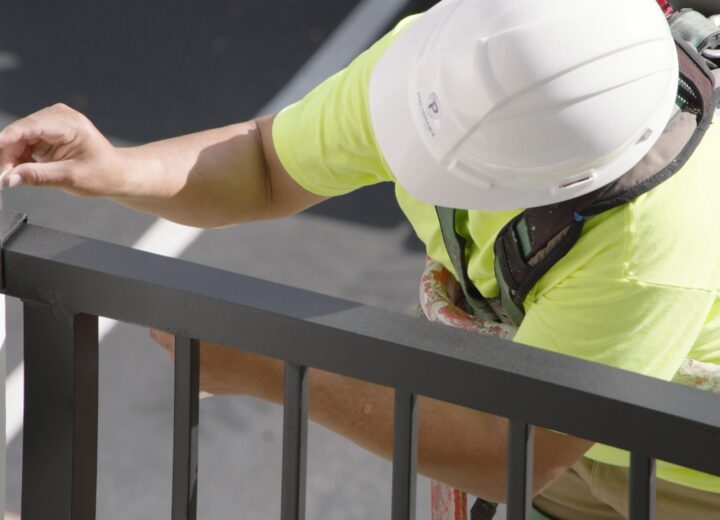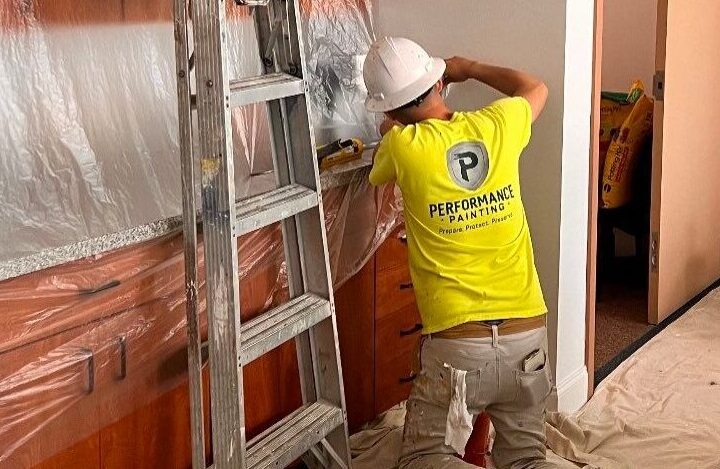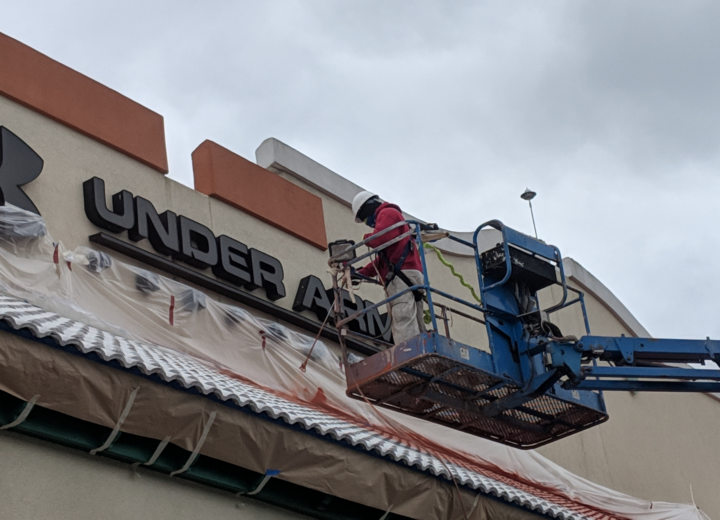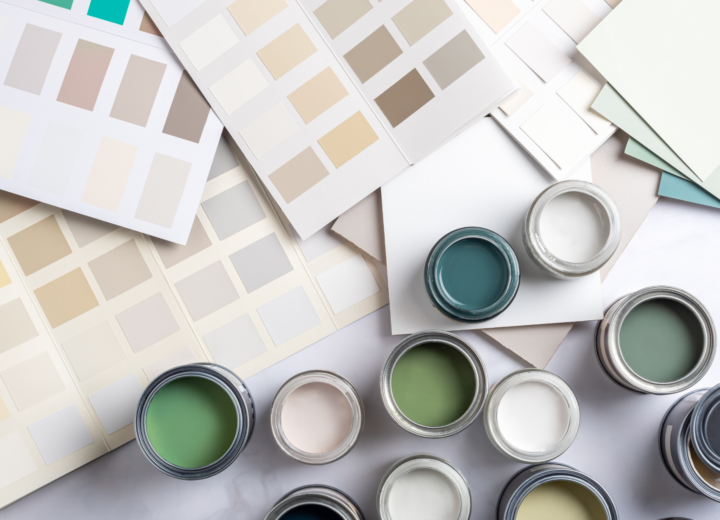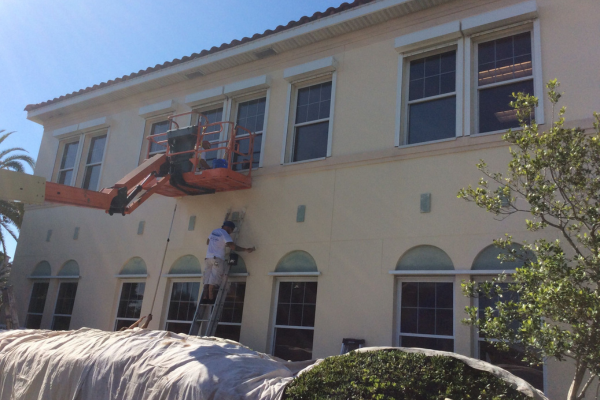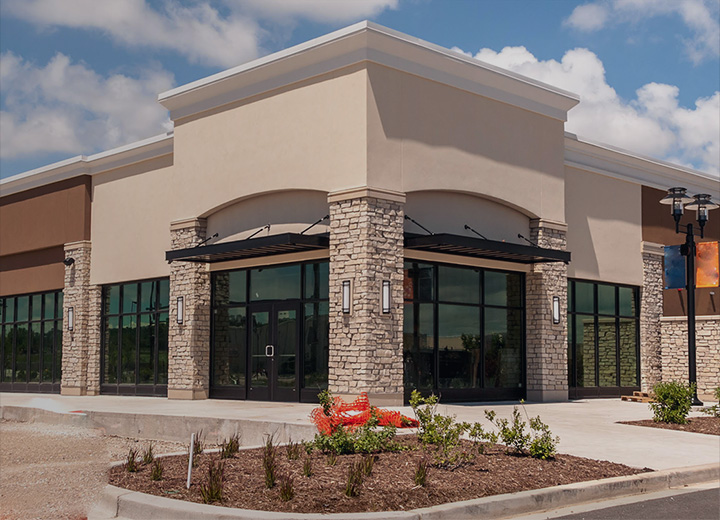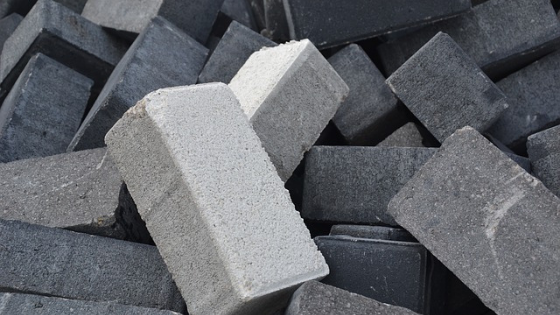 Nothing is more irritating then commissioning a project just to be disappointed with the end result. If you’ve had your facility’s concrete block painted recently and you are starting to notice that the paint is chipping, fading, or cracking, the job may have been done incorrectly.
Nothing is more irritating then commissioning a project just to be disappointed with the end result. If you’ve had your facility’s concrete block painted recently and you are starting to notice that the paint is chipping, fading, or cracking, the job may have been done incorrectly.
There can be several reasons why your painted concrete block is not holding up against the elements like they should.
First we are going to go over some of the reasons for concrete block paint failure. Then we will go over the best practices to use when fixing these issues.
There can be a few reasons why the paint has failed. They include:
- Improper media blasting
- Inadequate cleaning
- Inadequate removal of previously damaged paint
- Use of a low cost, low quality paint
- Not using the correct type of coating
- Improper curing time between layers
- Concrete block damage was not fixed properly
- Concrete block was too permeable
Coating concrete block is more than just putting paint on concrete. There is a correct process that needs to be followed to ensure your coating lasts.
Fixing Concrete Block Paint Failures
Armed with the information from above, we can now work on the process of rectifying the failed paint.
Removal of Damaged Paint
First, you will need to make sure that the concrete block is cleared of as much of the old paint as possible. To do this will depend on where the blocks are located, and if it is interior or exterior block.
Using some form of media blast is recommended to prepare your surface.
If you are not able to use a media blast, then you will need to use a chemical to help strip the damaged paint off the block and then scrub the surface until clean. Make sure to get as much of the residue off as possible.
Repair any Damages to the Concrete Blocks
Next, you should inspect the surface for any damages that might be in or around the concrete blocks and fix them before repainting.
If the blocks do need any repairs, make sure that the surfaces are smoothed out and prepped before painting. You want to get as much conformity as possible so that the fix will not stand out when you look at it.
Make sure to allow time for any of the repairs to completely cure before going onto the next step. If you do not, you can end up with having to repair the area again sooner than you think.
Know the Porousness of the Block
You can plan better if you take the time to find out how porous the block is. If you have block that is extremely porous, then you will need to make sure that you have the right kind of paint. In some cases, you may need to use more paint to cover the block adequately.
Know What the Surface of the Blocks Will Endure
Is this block in a medical facility and will it have to endure heavy or continuous cleaning? Is the block in direct sunlight and will it have to withstand harsh UV rays? Knowing the type of environment the block will be exposed to will help to determine the kind of paint that you will need and how much.
Getting the Right Paint
One of the most important steps is getting the correct type of paint.
A professional painting contractor knows that this can make the difference between a long-lasting surface or one that breaks down quickly. So if you are unsure at all about what to buy, please seek their advice.
It could be recommended that you add a primer to the block before proceeding to the top layer(s) of paint. Some paints include a primer within them, but sometimes it’s strength is not appropriate for concrete block.
Again, make sure that you allow the required dry time between any layers so that it will adhere to the surface.
If you feel that the above is too much for you to handle, reach out to a certified local painter that can help guide you through the process or can do the job for you.

